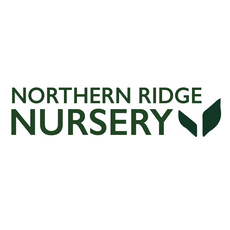Master Indoor Gardening: Tips & Tricks for Thriving Plants
Welcome to the green world of indoor gardening, an exciting and rewarding venture that allows you to nurture and grow plants right in your living spaces. Whether you are a novice looking for a new hobby or an experienced gardener wanting to expand your expertise indoors, this comprehensive guide is designed to help you master the art of indoor gardening and ensure your plants not only survive but thrive.
Understanding the Basics of Indoor Gardening
Before diving into specific tips and tricks, it is crucial to understand the basic requirements and considerations for successful indoor gardening. This section will cover the fundamentals that every indoor gardener needs to know.
Choosing the Right Plants
Selecting suitable plants is the first step towards successful indoor gardening. Some plants are more adaptable to indoor environments than others. Here are popular options for beginners:
- Peace Lily
Lighting Requirements
Light is essential for plant growth, and understanding the light requirements of different plants is critical:
- Low Light: North-facing windows or rooms with few windows.
Proper Watering Techniques
Watering is often where most beginners make mistakes. Here are some tips to get it right:
- Water when the top inch of the soil is dry.
Advanced Care for Indoor Gardening
Once you have mastered the basics, you may want to explore more advanced techniques to further enhance the growth and health of your indoor plants.
Optimizing Humidity Levels
Many Houseplants originate from humid tropical regions. Here’s how you can increase the humidity around your plants:
- Group plants together to create a microenvironment with higher humidity.
Fertilization
Indoor plants also need proper nutrients to grow healthily:
- Use a balanced, water-soluble fertilizer every 4-6 weeks during the growing season.
Pest Management
Even indoor plants can be susceptible to pests. Here are some eco-friendly ways to manage pests:
- Use neem oil or insecticidal soap for treatment.
Designing Your Indoor Garden
Create a visually appealing indoor garden by considering the aesthetic aspects of plant arrangement and choice of containers. This section provides ideas and inspiration for crafting a beautiful indoor garden.
Plant Arrangement Concepts
Consider these ideas for arranging your plants to enhance the visual appeal of your space:
- Arrange plants of varying heights to create a layered look.
Choosing Containers
The right container not only functions well but also complements your home décor. Here are some tips:
- Choose pots with drainage holes to avoid waterlogging.
Maintaining Your Indoor Garden
Regular maintenance is key to keeping your indoor garden healthy. This section covers essential maintenance routines to keep your plants looking their best.
Pruning and Cleaning
Keep your plants in top condition with regular pruning and cleaning:
- Remove dead or yellowing leaves to promote healthy growth.
Periodic Re-potting
Plants grow and so should their homes. Here’s how to re-pot them properly:
- Re-pot your plant when it outgrows its current pot, typically every 1-2 years.
Conclusion
Indoor gardening is a delightful and enriching activity that enhances your living space while providing a sanctuary of peace and beauty in your home. With the right knowledge and tools, you can master indoor gardening and enjoy the lush, vibrant growth of your indoor plants. Remember, the key to success lies in understanding the specific needs of your plants and providing consistent care.
Embark on Your Indoor Gardening Adventure
Browse our collection of indoor plants and gardening supplies to start your journey into the world of indoor gardening. Whether you are looking to add a splash of green with a low-maintenance Pothos or the elegance of a Ficus, our extensive range ensures you find the perfect plant to complement your indoor space. Start your indoor gardening journey today, and watch your living space transform into a vibrant oasis of life!










